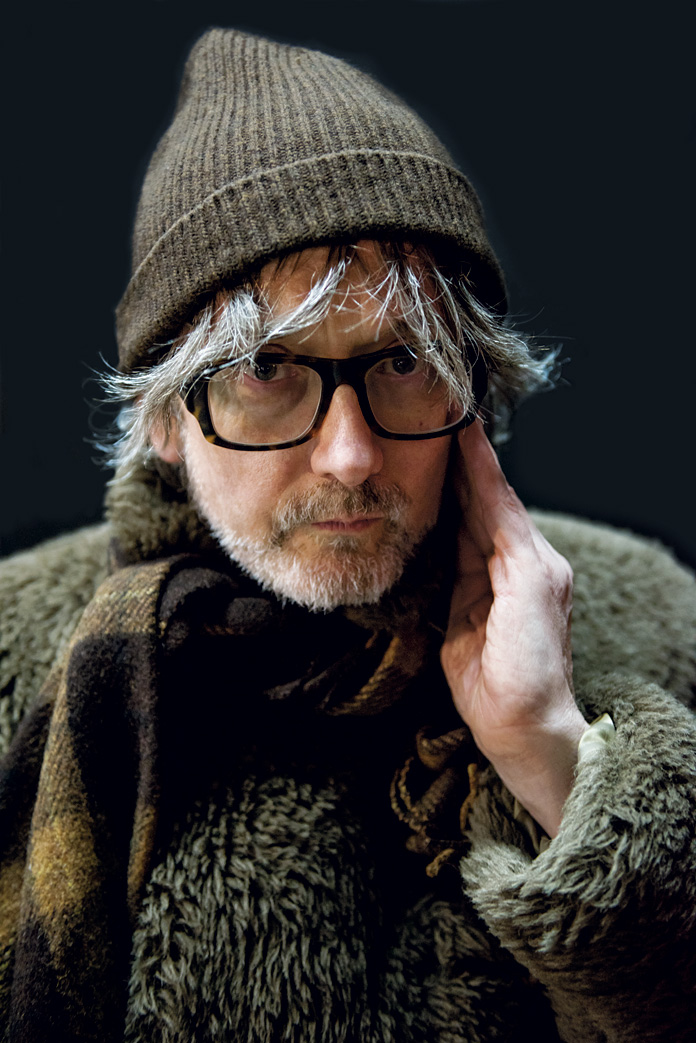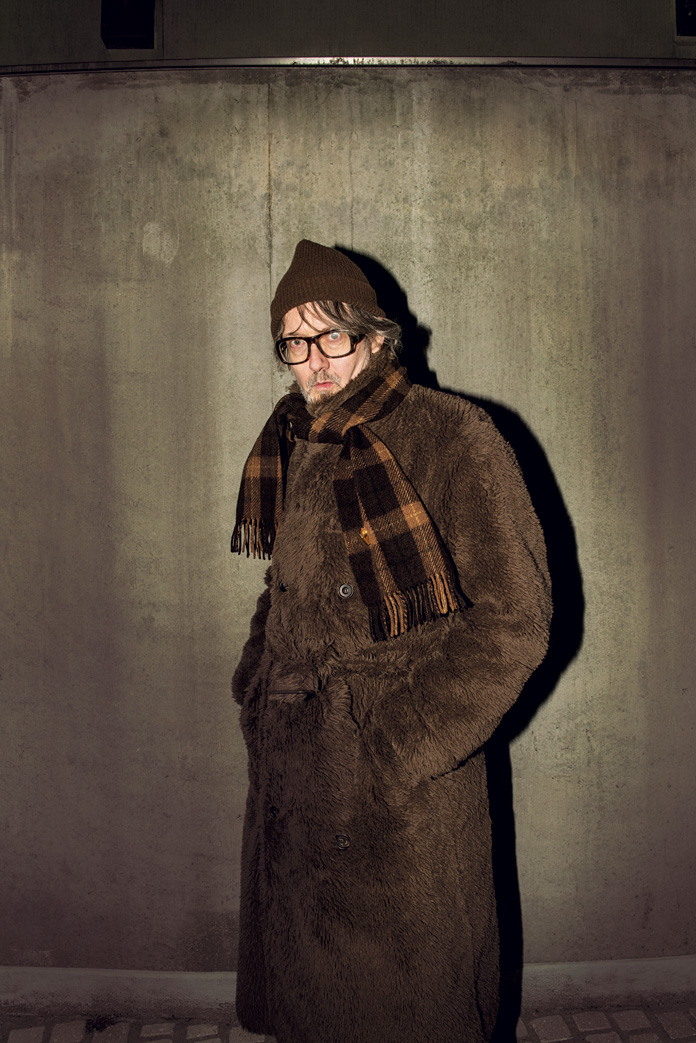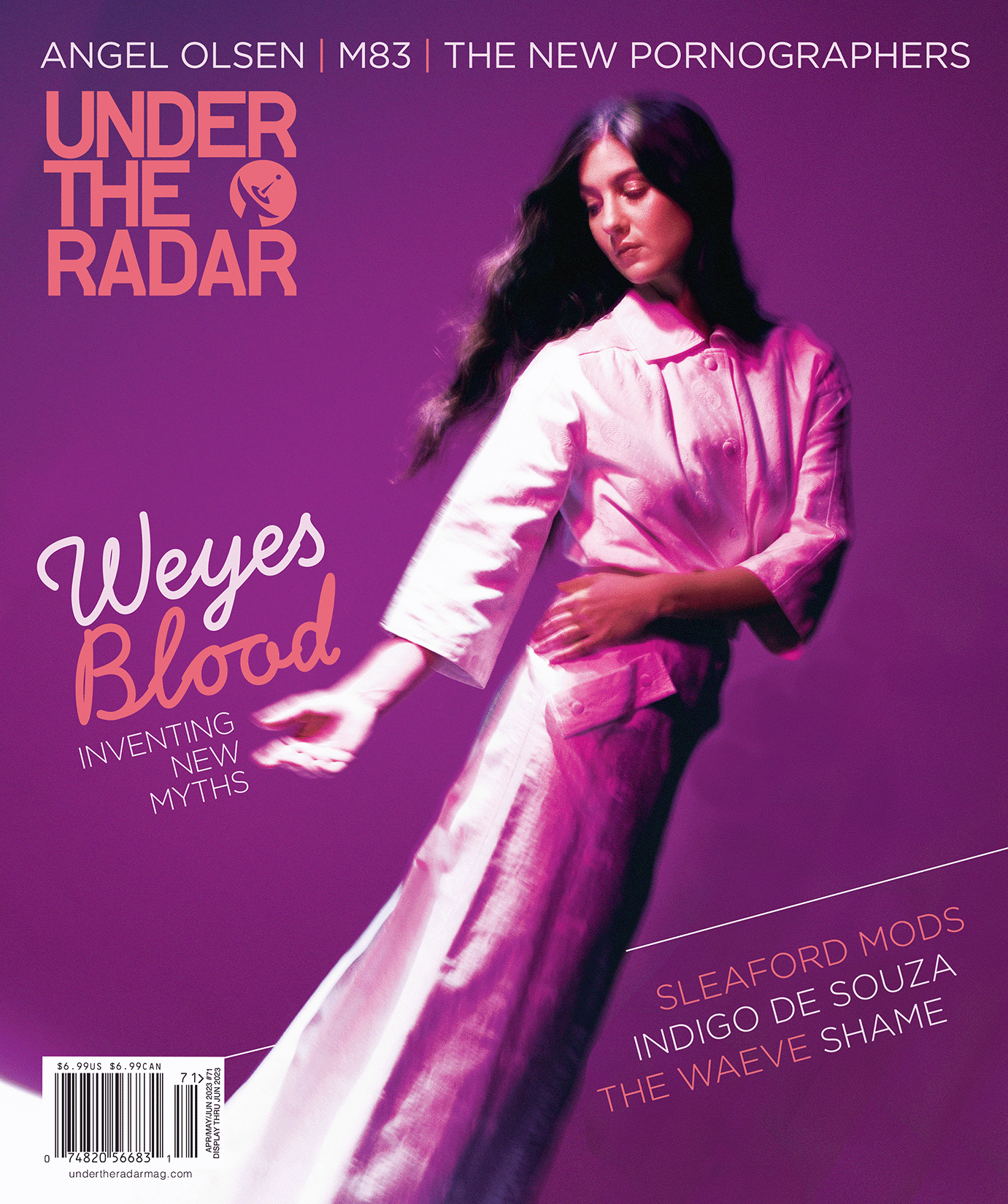
Jarvis Cocker on JARV IS… and Their Debut Album “Beyond the Pale”
Watch It Evolve
Mar 25, 2021
Photography by Ray Lego (for Under the Radar)
Issue #67 - Phoebe Bridgers and Moses Sumney
![]()
“Like a lot of people, I went through phases,” explains Jarvis Cocker, when asked about his first reaction to the closures and quarantining which occurred in the outbreak of COVID-19. “At first I thought, ‘Oh, this is going to be like going on some sort of meditation retreat, where you go and look at a wall for, like, three weeks, and it’s supposed to clear your consciousness.’ But then as it goes on, you change…I don’t think there’s been another time where the world has had the pause button pressed on it. Everybody’s in this state where you can’t really help but evaluate the way that you live, and figure out what’s important to you.”
Our conversation happened days before Cocker’s latest record, Beyond the Pale, was originally due to have been released. The sudden, sweeping changes in the world saw the record pushed back by several months, and the accompanying tour potentially delayed much further. Instead of heading out on the road with the band that week as was planned, Cocker was sheltering at home outside of Sheffield, England, sorting out just how JARV IS…, a musical project he’d previously described as “an ongoing live experience,” would adapt to a world where live music has been canceled for the foreseeable future.
“You know that game you play when you’re a kid, where one person draws a head and they fold up the paper and pass it to the next person, who draws the torso, and then it gets passed along?” Cocker says, explaining how his new band has kept sharp during lockdown. “Eventually you unfold the piece of paper and see what you’ve got. We’ve been doing a musical equivalent of that, where one member of the band comes up with a musical idea, records it, and then sends it along to the next person. We all add our bits to it. We’ve done a few pieces of music like that. I don’t know if we’ll ever let anyone listen to it,” he laughs, “but it’s been a good way of keeping together.”
In late 2017, Sigur Rós invited the former Pulp frontman to perform at their Norður og Niður festival in Iceland. Cocker was poised to decline their offer because he didn’t have a band together, but on the other hand had a few song ideas he’d been toying with since the release of his last solo record, 2009’s Further Complications. (“I thought that if I keep saying ‘no,’ these songs were never going to get finished,” he says.) And so, gather a band he did. The new group, JARV IS…, includes harpist Serafina Steer, violinist Emma Smith, bassist Andrew McKinney, Jason Buckle on synthesizer, and Adam Betts on percussion.
From their very beginning, performing in front of audiences was perhaps the most significant component of JARV IS…. For the first time in his career, Cocker’s music was being composed almost entirely in a live setting. After the initial Sigur Rós gig, Cocker and company took the seedling songs on an intimate tour of tiny clubs. They would experiment with new ideas and arrangements each night, improvising and gauging the audiences’ reactions, keeping the parts they liked best, and recording the results to be toyed with in the studio later. In some cases, these live recordings wound up as the base tracks for the final record.
“None of [the songs] were finished until we played them for people,” Cocker explains. “When you work on songs in a studio, especially in front of a computer, you work on them almost mathematically—you think, ‘We’ll do this for four bars, and then that for four bars.’ You wind up with a very predictable structure. But when it comes from a live thing, you’re not thinking about a song’s structure—you’re thinking about what it means, and how you’re going to communicate that. Their structures tend to be more interesting. It’s like the difference between a tree and an electric pylon.”
The result sound was organic, and brought with it several surprising effects. (A rushing roar midway through album closer “Children of the Echo” isn’t a booming synthesizer, as it sounds, but the audience at last year’s Primavera festival repeating Cocker’s words.) While Beyond the Pale is definitively a record with its origins in a live arena, Cocker is adamant that it is not a “live” album.
“From what I remember of live albums from when I was a kid, I just thought they were terrible,” says Cocker. “They sounded bad, and were usually just some kind of rip-off thing where the band hadn’t had time to write more songs, so they just released a live album as a stopgap. I didn’t want [Beyond the Pale] to sound like a live album, and I don’t think it does. I hope it’s the best of both worlds, in a way, where the energy and the spirit of a song was captured by recording it live, when you aren’t so self-conscious of your performances. But then, modern technology means you can take that stuff and add things to it.” He continues: “It’s almost like recording a record without realizing you were doing it. Sometimes when you go in the studio, you get a little self-conscious or you start over-thinking things. And so, it’s really good to get something down without having to over-intellectualize it too much.”

Now, a string of tour dates could effectively double up as rehearsals and recording time. The plan for the postponed JARV IS… dates would have seen the band playing tracks from Beyond the Pale, as well as workshopping a set of new songs that would evolve as the tour continued along. As of now the shows have been re-scheduled, but Cocker acknowledges that even if it is deemed safe for them to go on, that they likely won’t be the same as they had been before.
“Thinking logically, they’re probably going to be one of the last things to come back, because you can’t really have a live show with people social distancing,” he says. “It would be really sad to look out into an audience and see people dancing two meters away from each other,” Cocker laughs. “The whole thing about a concert is that everyone is kind of squished together, and that kind of unity of a crowd. I don’t know when we’re going to get a chance to do that again.”
Cocker acknowledges, though, that the disappearance of live music is only a very minor one of the many repercussions of the pandemic that are being felt across the globe. (On the most personal level, the travel restrictions had prevented him from visiting his son in Paris for more than two months.) His hope is that, when we get through this, we’ll emerge changed.
“I would never say that this is a good thing to have happened to us as a civilization because people are dying in large numbers,” says Cocker. “But like anything, most things that are setbacks can be an opportunity, as well. In finding a way through something, we gain something from it.”
“The trend within modern society was sort of towards self-isolation,” continues Cocker. “People were generally staying in. People didn’t go out to the cinema anymore, they would just watch films on TV. Often they wouldn’t go out and eat anymore; they would just order in and get stuff delivered. So, that was the way things were going, and particularly the Western world thought it was the way forward. It was: ‘I want my things, and just for me, with no interaction with any other human beings, thank you very much.’ Now, when the ability to mix with other human beings is suddenly taken away, everyone realizes that, actually, that is the interesting thing about life. To have that realization collectively I think could be a very positive thing.”
[Note: This article originally appeared in Issue 67 of Under the Radar’s print magazine, which is out now. This is its debut online.]
Support Under the Radar on Patreon.
Most Recent
- Premiere: Mia Day Shares New Single “Mountain Song” (News) — Mia Day
- Tallinn Music Week, Tallinn, Estonia, April 3-7, 2024 (Review) — Virta, Musta Huone, Mari Kalkun, Sven Grünberg
- Picnic at Hanging Rock [4K UHD] (Review) —
- Joe Goddard of Hot Chip Announces New Album, Shares Video for New Song “Moments Die” (Feat. Barrie) (News) — Joe Goddard, Hot Chip
- Premiere: O Slow Shares New EP ‘Every Time I Look In The Mirror’ (News) — O Slow


Comments
Submit your comment
There are no comments for this entry yet.